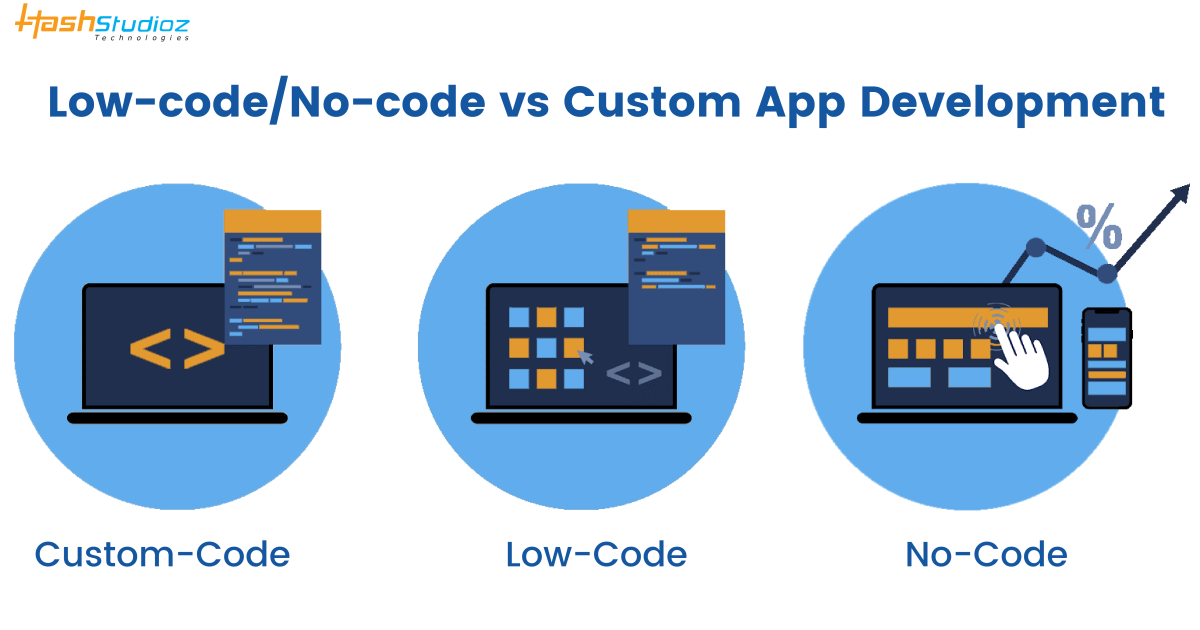Top Advice For Choosing Low-Code Platform Recommendations
Top Advice For Choosing Low-Code Platform Recommendations
Blog Article
In Terms Of The Integration Capabilities, Low-Code Application Development Has A Lot Of Advantages.
Low-code integration of applications has many advantages, including the ability to seamlessly integrate multiple platforms and services. Here are the benefits of pre-built APIs and connectors:
Wide Selection of Connectors. Low-code software typically includes many built-in connections to enterprise systems that are popular (e.g. cloud-based services, databases, CRM). This simplifies integration with the systems.
API Integration: Many low-code platforms provide out-of-the-box API integration features, allowing developers to connect to other service and data sources quickly.
User-Friendliness
Drag-and-Drop Integration integration tasks can usually be accomplished using drag-and-drop interfaces, making it accessible to both developers and non-developers to set up complex integrations without writing extensive code.
Visual Workflow builders: These visual tools are used for designing workflows, data flows and integrations. They aid in understanding and establishing them more easily.
Standardized Integration Methods:
SOAP and RESTful Services The support for web services standards such as REST and SOAP facilitates easy integration with a variety of external systems.
OData Standards and Other Standards Support for standards, including OData permits easy access to data and its manipulation across multiple platforms and applications.
Real-Time Data Synchronization:
Low-code platforms allow for real-time integration between systems and applications. This allows data to be kept up-to-date and consistent across all departments of the business.
Event-Driven architecture: Certain platforms can support event-driven architectures. This allows applications to respond to events in real time that is vital for interactive and dynamic apps.
Legacy System Integration:
Bridging Old and New Systems Low-code platforms typically include tools for integration with older systems, allowing companies to modernize their IT infrastructure without having to completely revamp existing systems.
Data Migration Tools: Built-in software helps transfer data from older applications to new ones that are built on platforms that use low-code.
Third-Party Service Integration:
Cloud Services Integration: Easy scaling and deployment of apps is made possible by seamless integration with cloud services such as AWS, Azure and Google Cloud.
Business Application Integration: Low-code platforms are able to integrate with different business applications like Salesforce, SAP, Microsoft Dynamics and more. This allows for a seamless workflow across different business functions.
Simple Data Management
Unified Data Modells: Some lowcode platforms offer unification of coding models that simplify data management as well as integration and synchronization between various systems.
Data Connectors: Data connectors that are pre-configured to allow easy access to and manipulation of data from diverse sources.
Security and Compliance
Secure Integrations - Low-code platforms are designed to ensure that all integrations conform to security protocols and standards. This helps protect information both during its travel and when it's stored.
Security Features: These platforms typically contain features that ensure integrations comply with regulatory requirements (e.g. GDPR, HIPAA), providing peace of mind for businesses that handle sensitive information.
Extensibility:
Low-code platforms permit the addition of custom scripts and codes to satisfy more complicated integration needs. This flexibility is offered without compromising user-friendliness.
Plug-in Ecosystem : An ecosystem of extensions and plugins will enhance integration capabilities through allowing users to easily create new features as needed.
Overall, integration capabilities in low-code applications development platforms allow them to provide a robust platform to create connected, efficient, scalable, and interconnected applications. They simplify the process of connecting disparate system, improve the flow of data and enable enterprises to embrace new technologies while using existing ones. View the most popular consultant for Low-code Platform for application development for site info including application modernization, push alerts, app modernisation, stored sql procedures, app platforms, lowcode no code, develop cross platform mobile app, software for app development, app platforms, push alerts and more.
The Advantages Of Developing Low-Code In Terms Of Flexibility, Scalability And Scalability
Low-code development of apps offers many advantages, such as scalability and a flexible design for the application. These are important for creating applications that can adapt to changing needs and grow with the business. Three benefits are listed below.
Cloud-based deployment: A lot of low-code platforms are based. This lets applications expand seamlessly with the cloud infrastructure. Businesses can handle higher loads without having to worry too much about server administration.
Auto-Scaling Features: Built-in auto scaling capabilities automatically alter resources based on the demand. This provides constant performance during peak times, without the need for manual intervention.
Flexible Architecture:
Modular Design: Low code platforms encourage modularization of applications. This allows components to be designed independently developed, tested and scaleable. Modularity improves flexibility and makes it easier to expand or update specific components of an application without impacting the overall system.
Microservices Integration Microservices Integration: Support for microservices architecture allows applications to be developed as a collection of loosely coupled service, increasing both scalability and flexibility.
Customizable Solutions:
Flexibility : Low-code platforms enable developers to enhance capabilities beyond what is available in standard features. This allows businesses to satisfy the requirements of their particular business.
Third-Party Integrations: The integration of third-party APIs, services or other services allows companies to enhance the capabilities of their application by adding new functions.
Agile Development and Deployment
Continuous delivery and deployment Low-code platforms can be used with agile methodologies and enable continuous integration and delivery (CI/CD). This enables rapid deployment of updates and new features, allowing applications to develop rapidly in response to user feedback and changes in the market.
Iterative Development: This low-code model lets applications be upgraded and scaled gradually which lowers risk and allows for more controlled expansion.
Resource Optimization
Efficiency in Resource management: Low-code platform tools aid in optimizing resource usage by monitoring and managing the performance of the applications. They ensure that resources are used effectively and efficiently increased or decreased according to the actual needs.
Load Balancing : The integrated load balancing feature distributes workloads evenly among servers. This improves the system's capacity to handle high traffic and also ensures the same performance.
Global Reach
Multi-Region Implementation: Low code platforms can be implemented across multiple geographical regions. This enables companies to offer users low latency access worldwide. This is important, especially when it comes to applications that have global users.
Localization Support Built-in support for localization lets the software be easily adapted to different languages and requirements in different markets.
Updates and maintenance
Maintenance is made easier because of the visual nature and modularity of low-code apps simplifies maintenance which allows quick fixes and updates to be made without long downtime.
Version Control Version Control: Systems that integrate version control oversee rollbacks and changes to ensure that updates are able to be installed and previous versions can restored if necessary.
Cost Efficiency:
Low-code platforms reduce development costs because they eliminate the need for extensive programming. They also make it possible to expand applications without need for a significant expenditure or effort.
Pay-As-You-Go Models - A lot of low-code platforms offer flexible pricing models such as pay-as you-go that is based on the actual usage, growth, and financial flexibility.
Overall the scalability and flexibility advantages of low-code applications enable businesses to build robust, flexible and scalable apps efficiently. These platforms permit quick adaption to changing needs, efficient resource usage, and constant improvement. This means that the applications are able to grow along with the company. Check out the most popular Enterprise application development with Low-code Platform for more advice including database in azure, application modernization software, push notifications android, cross platform mobile app development, mobile app development platforms, driver jdbc, microsoft azure sql, rapid application design, cross platform app development, cross platform mobile dev and more.
Benefits Of Low-Code Application Development In Terms Of Collaboration And Workflow
Low-code app development is an excellent option for companies looking to boost team productivity by streamlining the development process. These are the primary advantages.
Unified Development Environment (UDE): Low code platforms create a single, unified development environment that allows everyone on the team including developers as well as business analysts to collaborate efficiently. This helps eliminate barriers.
Visual Development Tool: The drag-anddrop nature of platforms that use low-code makes it easier for team members who aren't technically minded to take part in the process of developing. They will make sure that the business's requirements are accurately analyzed and implemented.
Communication Improved:
Real-Time Collaboration Many low-code platforms have real-time features such as commenting and editing simultaneously, or instant feedback. This allows for constant communication and can help to reduce the amount of time spent in back-and forth discussions.
Shared Workspaces: Teams are able to work together in shared workspaces in which they can review, edit and discuss elements of the project, making sure everyone is on the same page and pursuing shared goals.
The management of workflows has been simplified
Integrated Project Management Tools: A lot of low-code platforms have integrated tools for managing projects which can assist teams to track and organize their projects for development. This includes task assignment along with progress tracking and deadline management.
Workflow Automation Automating repetitive tasks and workflows will reduce errors and effort which allows employees to focus on strategic activities while improving efficiency.
More efficient cycles of iteration:
Rapid Prototyping Low-Code platforms are perfect for rapid prototyping. Iterative development is also feasible, allowing the team to test, develop and refine their applications in shorter periods. This allows feedback to be rapidly integrated, and further improvements to be implemented.
Agile Development Support: Support for agile methodologies allows team members to develop sprints. They are able to continuously provide small improvements in functionality and easily adapt to changes in requirements.
Accessibility:
Citizen Development: Low-code platforms allow business users the capability to create and modify apps without extensive coding skills. This allows IT and development teams to focus on other tasks and respond faster to the business needs.
Training and onboarding. The intuitive tools and the extensive training materials can help a new team members get acquainted and increase the overall level of collaboration.
Centralized Documentation, Knowledge Sharing and Information Sharing
Low-code platforms usually include tools for creating, managing and storing documents within their platforms. This lets all the project information to be centrally stored and easily accessed.
Knowledge Repositories: Teams may create and maintain knowledge repositories that include the best practices, templates and reusable components, which aid in knowledge sharing and reducing repetition of efforts.
Consistency and Standardization
Standardized Components: The use of already-built, standardized components gives consistency between applications. This makes it easier for the members of the team to comprehend the various components of a given project and then work on these components.
Governance and Governance and Compliance: Built-in governance frameworks ensure that all development adheres to the organizational guidelines and regulations, reducing the possibility of non-compliance as well as ensuring that applications adhere to quality standards.
Feedback Loops and Improvement Loops
Integrated Feedback Systems: Low-code platforms provide integrated feedback systems that allow users to offer feedback to the applications. Feedback can later be used in the development of these applications.
Continuous Improvement: The capacity for software to rapidly iterate and implement changes based off of feedback, while ensuring they are in tune with the requirements of the user as well as the business goals.
Visualization & Reporting
Real-time Analytics: Built-in analytics and reports provide real time insights into the performance of your project, user interactions and the progress. Data-driven decision-making is feasible.
Visual Workflow Mapping: Visual tools for mapping workflows and processes helps teams comprehend and optimize their workflows by identifying bottlenecks and areas for improvement.
In terms of collaboration, low-code applications are a great way to streamline workflows, bring teams from different backgrounds together and automate tasks. This creates a more collaborative atmosphere that is agile and efficient in its development process, resulting in higher-quality apps and a better alignment between business goals.